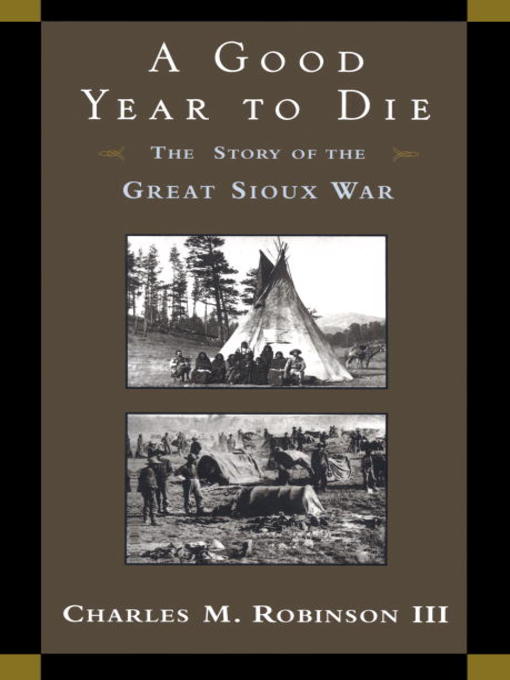
A Good Year to Die
The Story of the Great Sioux War
کتاب های مرتبط
- اطلاعات
- نقد و بررسی
- دیدگاه کاربران
نقد و بررسی

October 2, 1995
This is a provocative analysis of the Plains War of 1876 by an established scholar in the field. Making sophisticated use of Native American accounts, Robinson (Bad Hand: A Biography of General Ranald S. Mackenzie) demonstrates that the initial balance of forces was by no means unequal. The U.S. Army did not have the numbers, the doctrine or the leadership to win the kinds of decisive battles it expected to win. Robinson is particularly critical of generals George Crook and George A. Custer and correspondingly complimentary toward such Lakota warrior-statesmen as Sitting Bull and Crazy Horse. The work's centerpiece is the Little Bighorn, where Robinson believes Custer's exhausted men panicked in the face of superior numbers. The battle's principal importance, however, was as a catalyst. In its aftermath, the U.S. made available resources for the kind of attritional war the Plains Indians had no hope of waging successfully. This sympathetic account will appeal especially to those interested in Native American culture and history. Illustrations not seen by PW.

September 1, 1995
The Sioux battle cry is Hoka Key!, or "It's a good day to die!" The year to die, 1876, is the pivotal year in the Sioux wars, when record numbers of soldiers and Native Americans died; it is also the year of Custer's defeat, causing a newly aware and outraged public to demand an accelerated war against the Natives. Robinson (Bad Hand: A Biography of General Ronald S. Mackenzie, LJ 3/1/93) traces battles, describes rivalries and self-promotion by officers, and discusses the press and public opinion at this crucial time, debunking mythology. His well-founded overview of the Sioux wars, drawn from manuscripts, archaeology, military records, and newspapers, joins other recent recommended works such as Jerome Greene's Yellowstone Command (LJ 4/1/92), a military history of Gen. Nelson Miles's command, and Robert M. Utley's The Lance and the Shield (LJ 6/15/93), a biography of Sitting Bull. Recommended for public libraries.--Margaret W. Norton, J. Sterling Morton H.S., Berwyn, Ill.

September 1, 1995
Narrative history does not get much better than this. Too many books on the Great Sioux War of 1876 focus on the late, lamentable George Armstrong Custer. Robinson covers in ample but not excessive detail all the circumstances--broken treaties, gold rushes, and corrupt Indian agents among the foremost--that led to the war. He then describes the course of the war, which was fought as much against climate and terrain as against human foes and in which every degree of skill and courage, from the highest to the totally nonexistent, was exhibited by both sides. We learn that Crazy Horse was not a real generalissimo for the Sioux, that George Crook was not always as good as he has been painted, that the decisive victory of the campaign was probably won by the almost unknown Ranald McKenzie. Throughout, we are entertained while being informed. Superlative. ((Reviewed Sept. 1, 1995))(Reprinted with permission of Booklist, copyright 1995, American Library Association.)

























دیدگاه کاربران